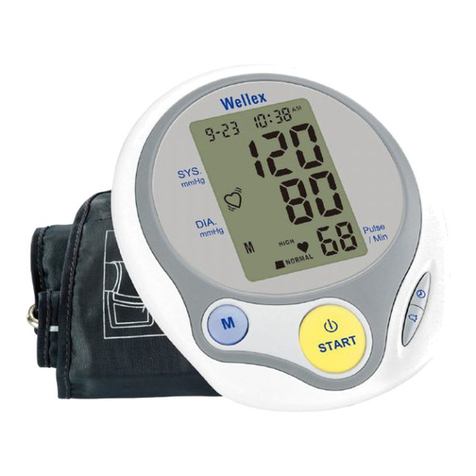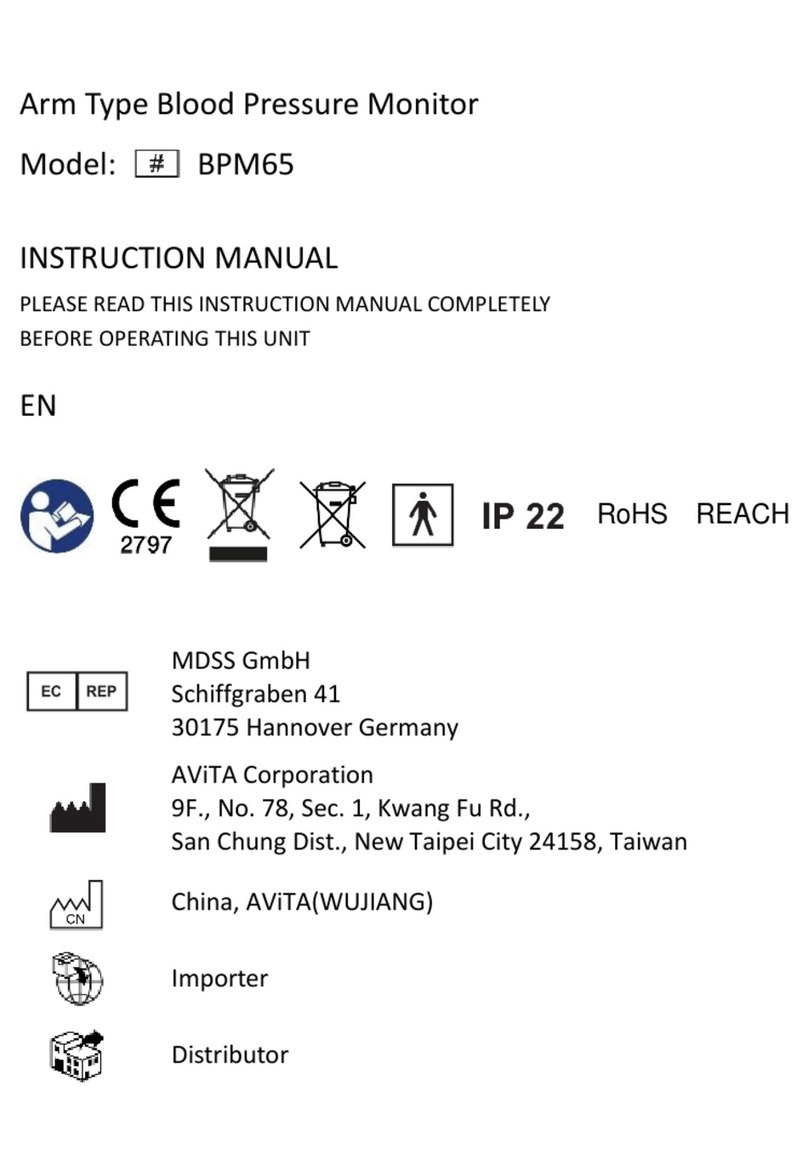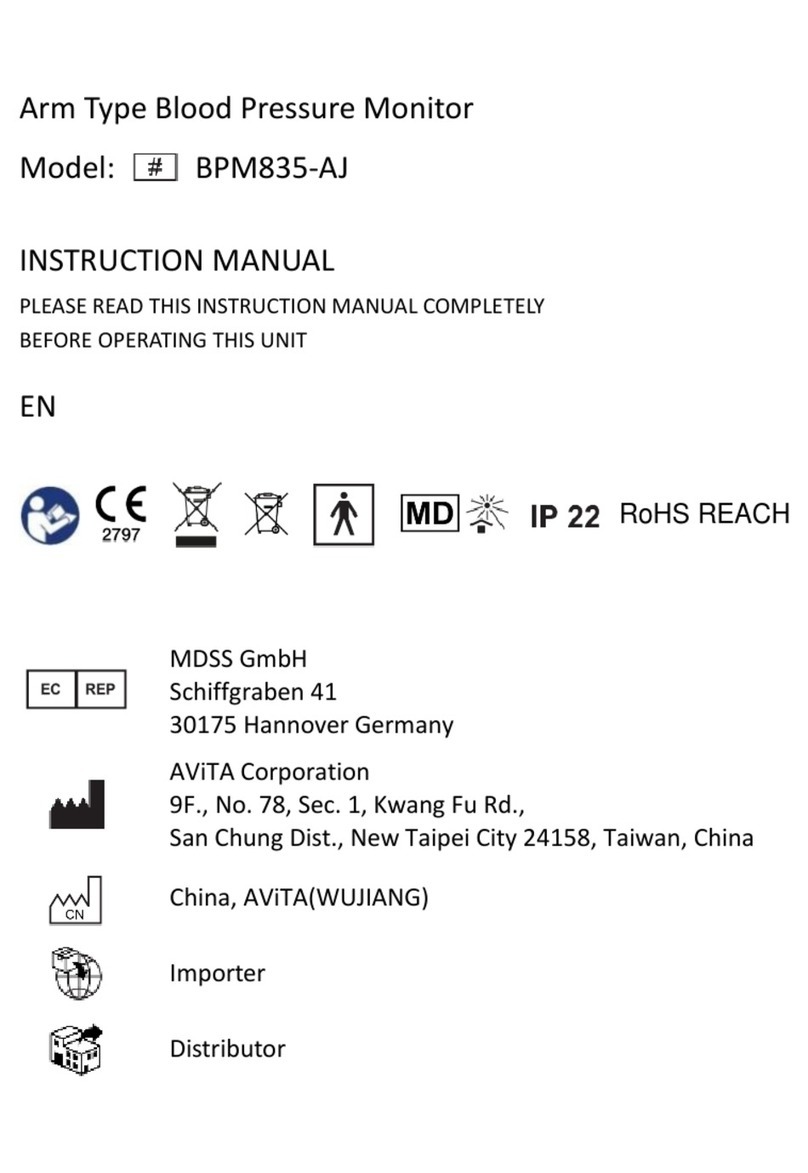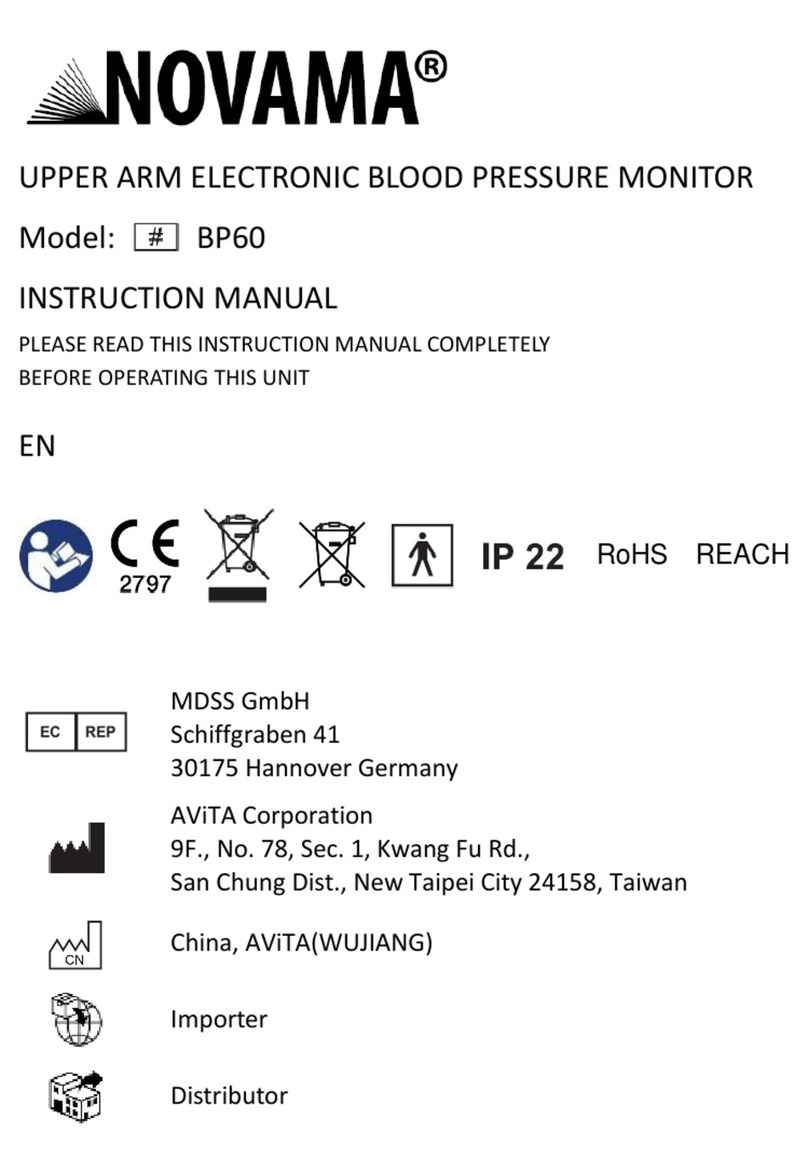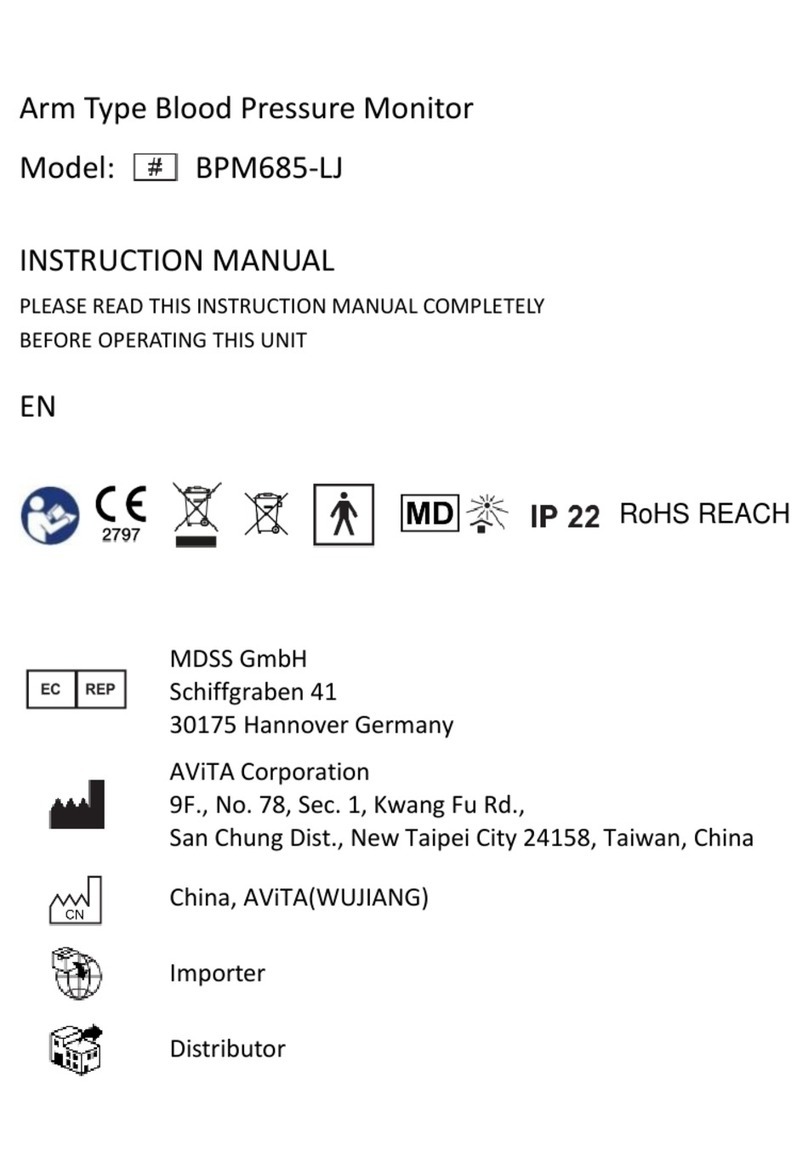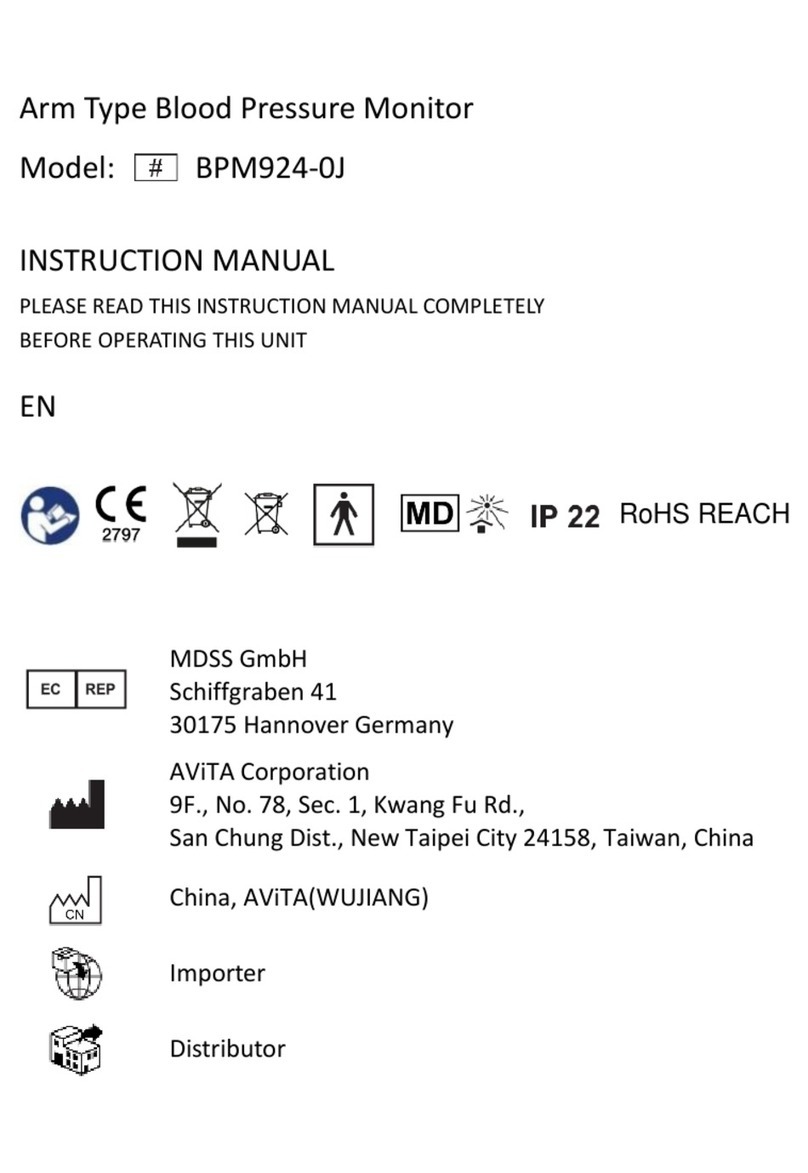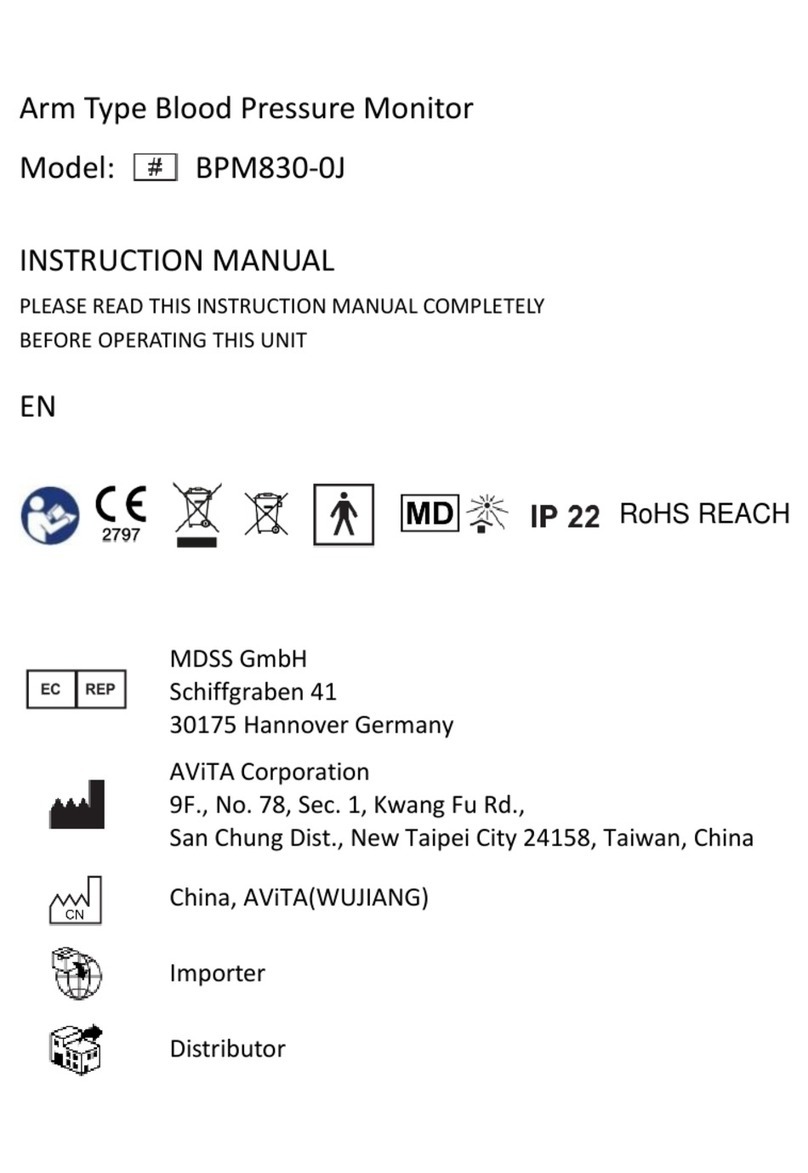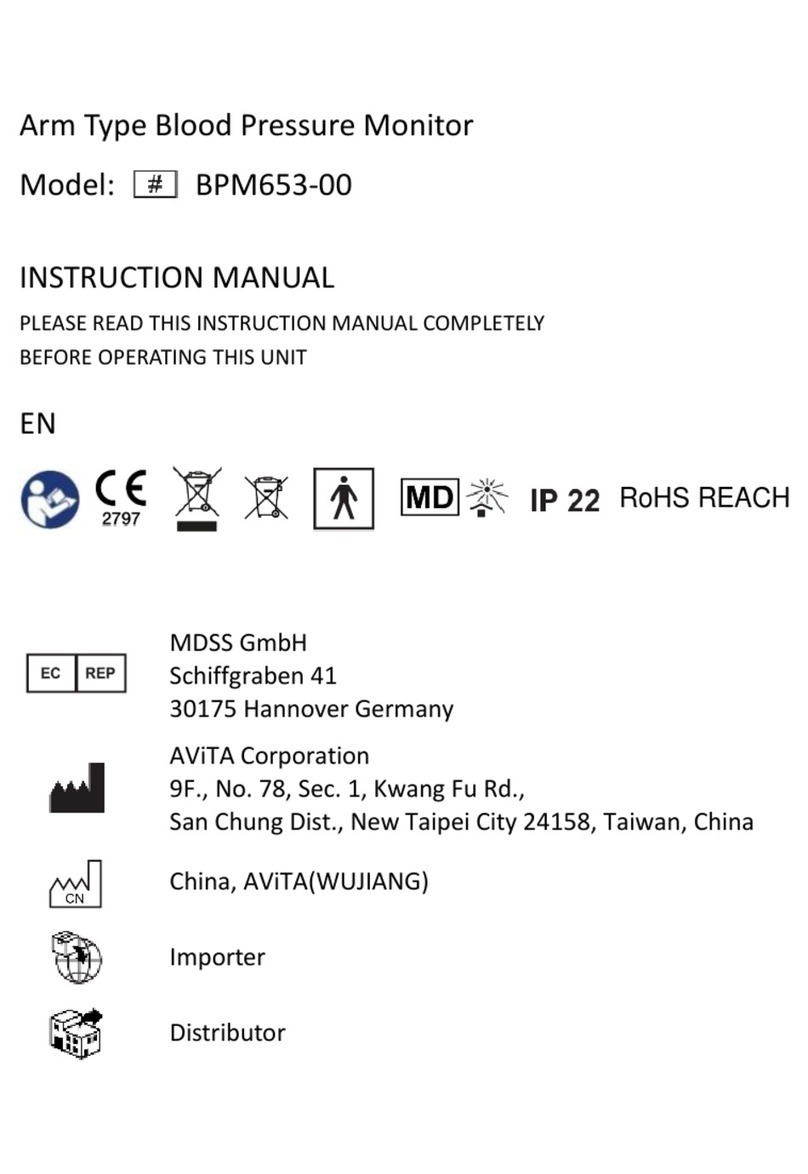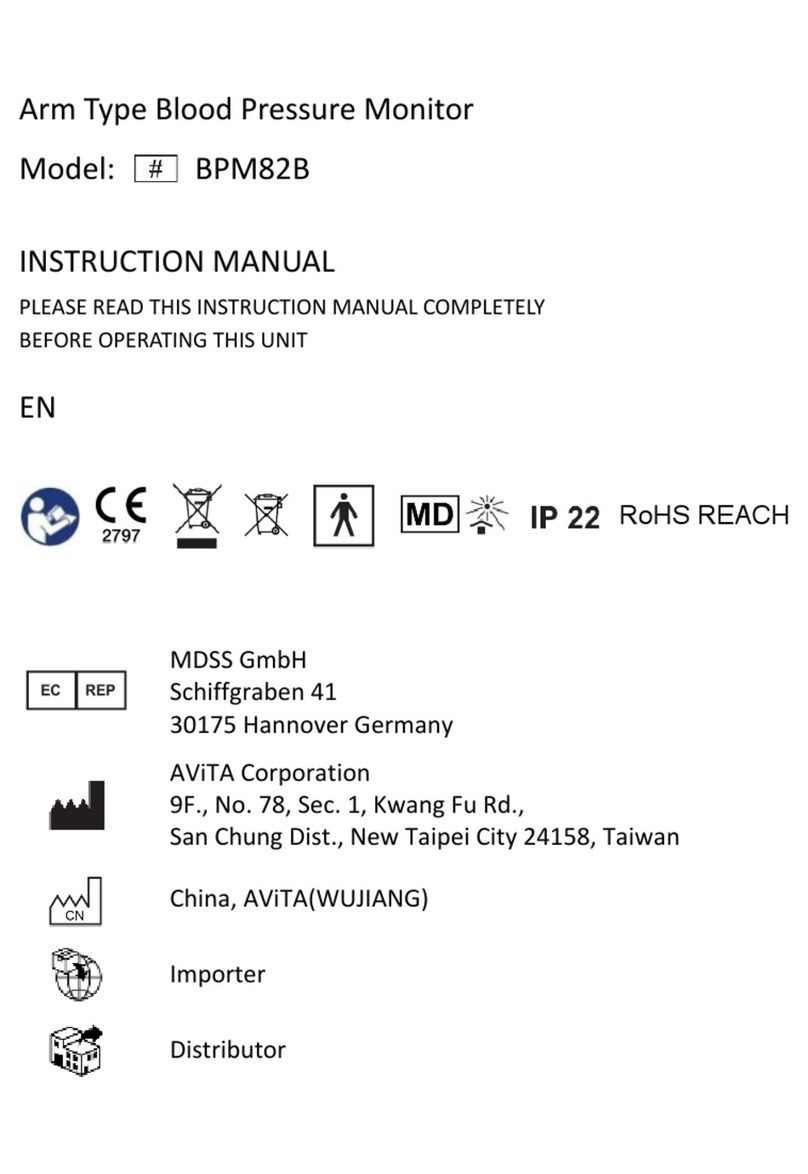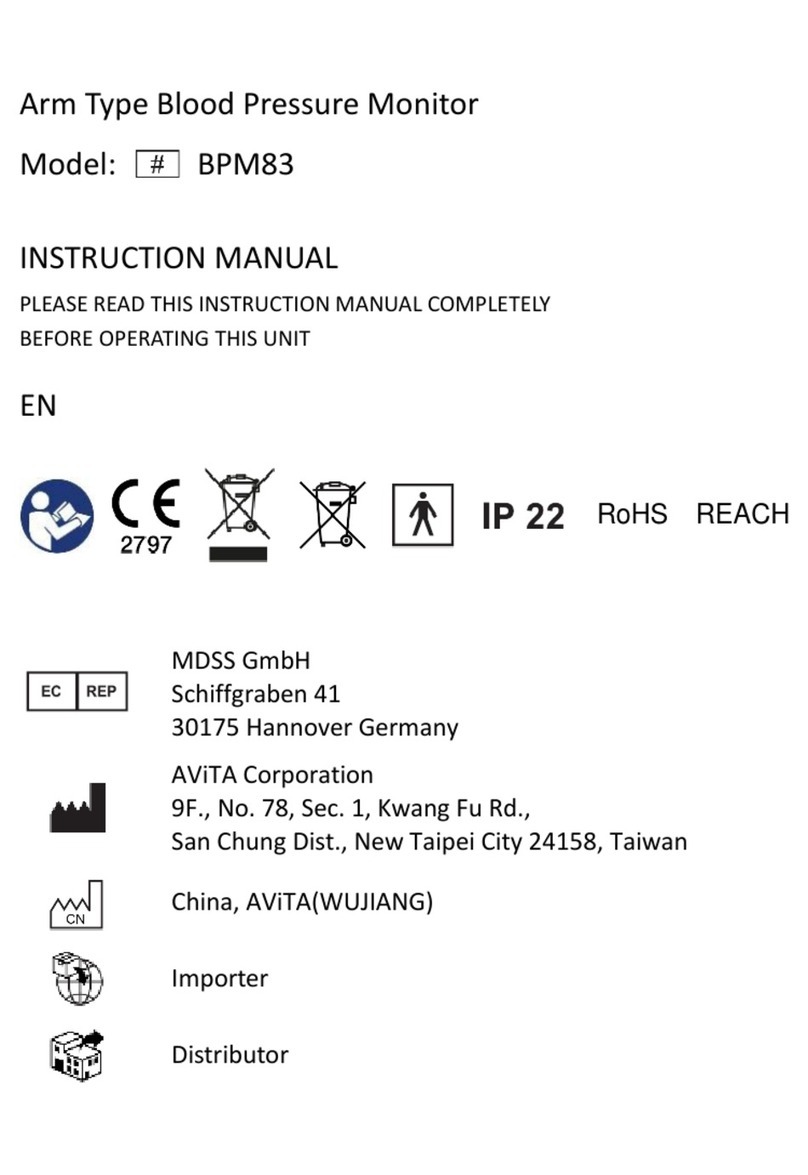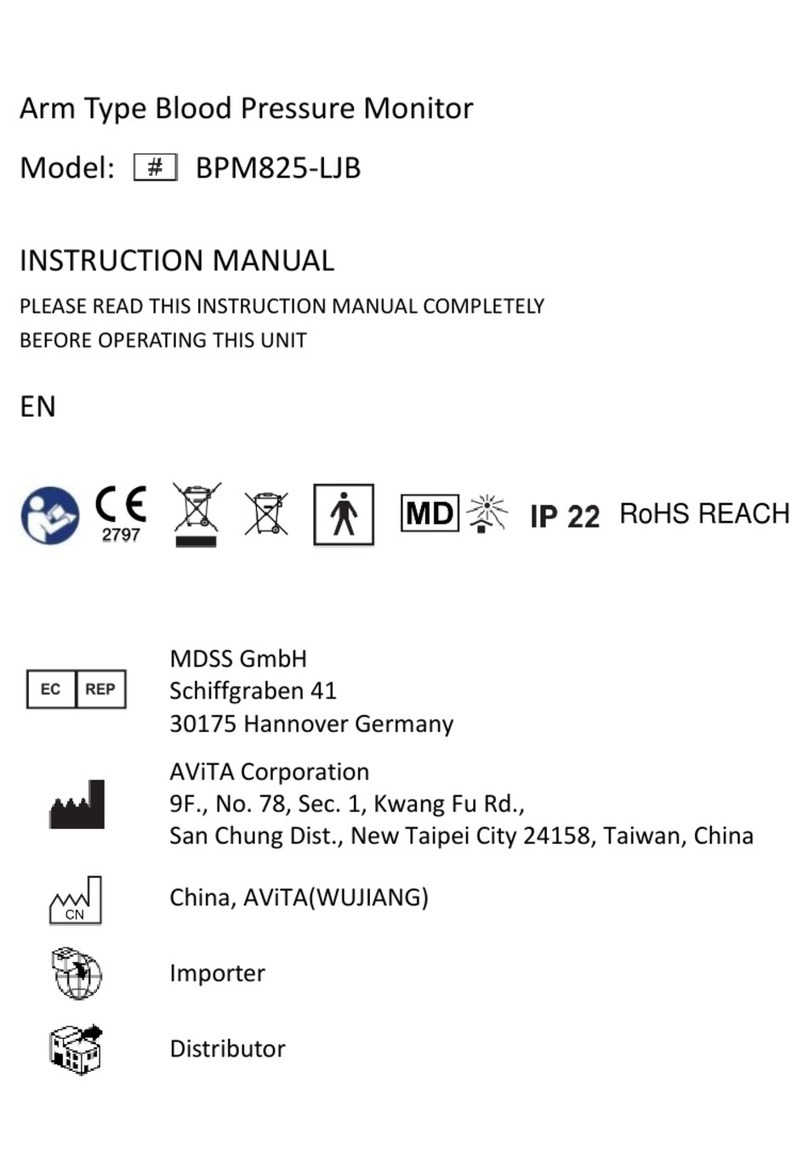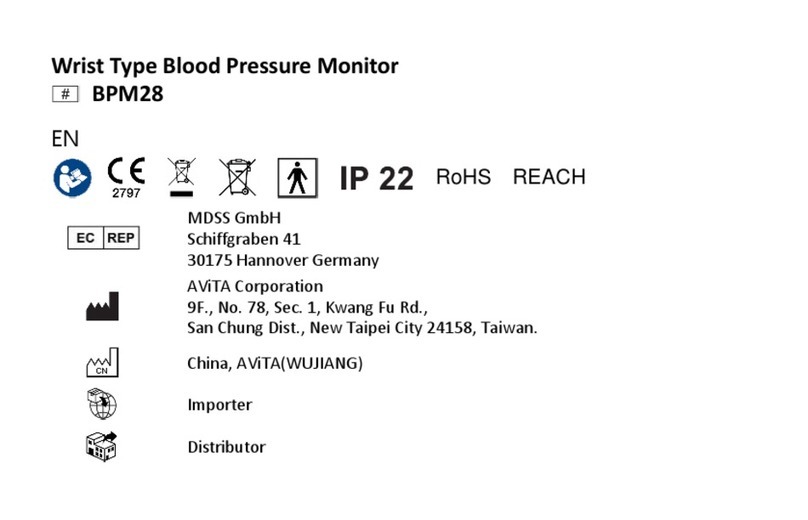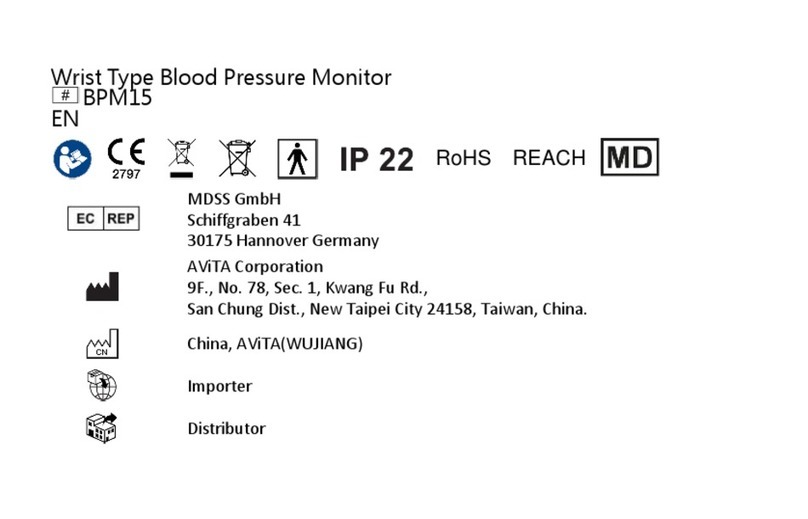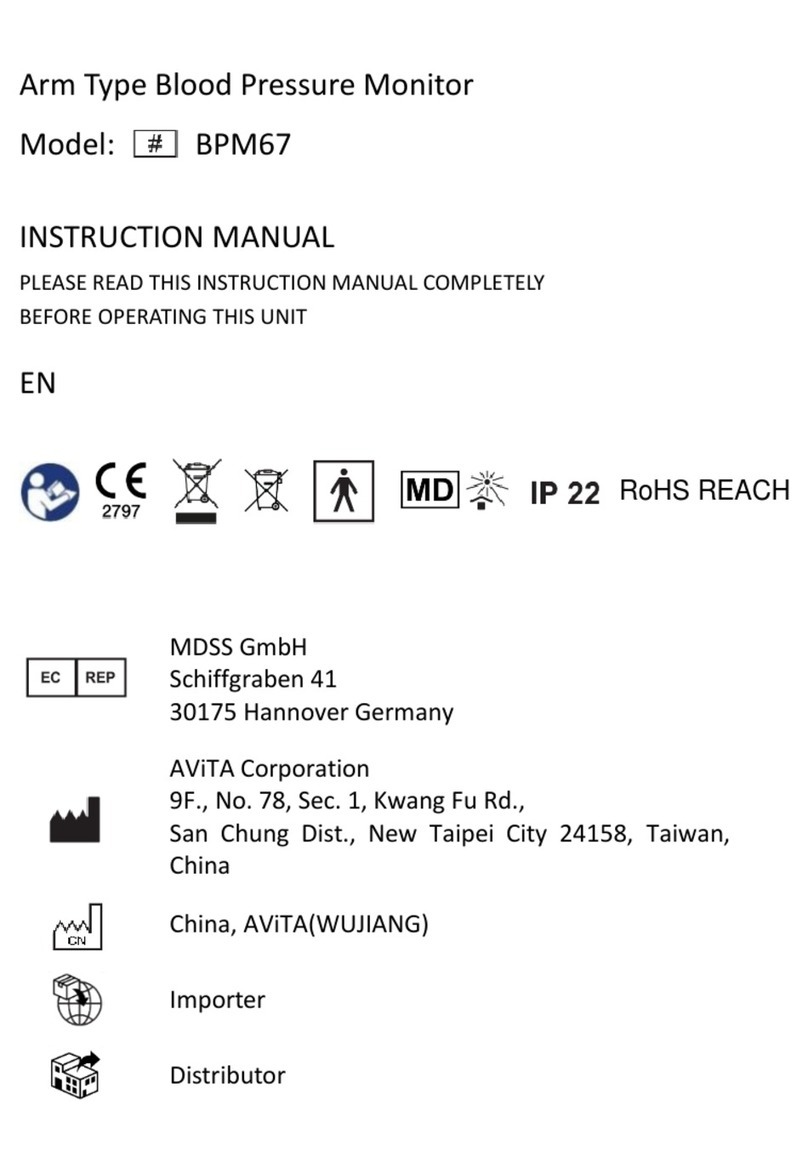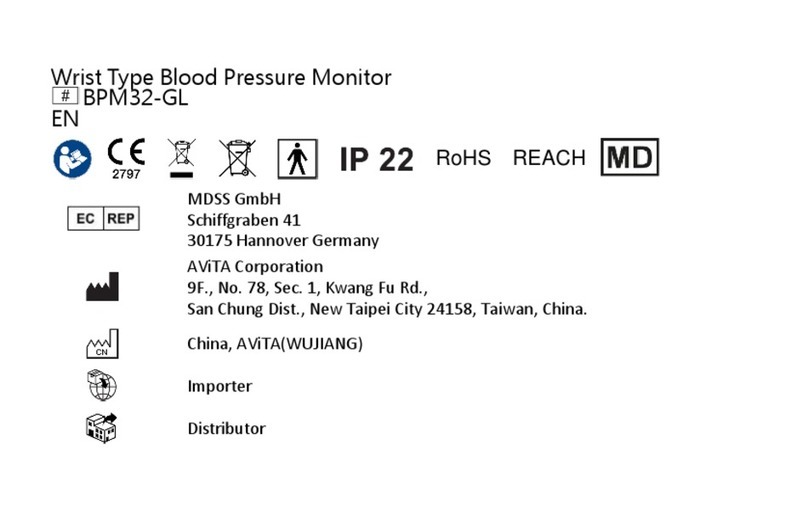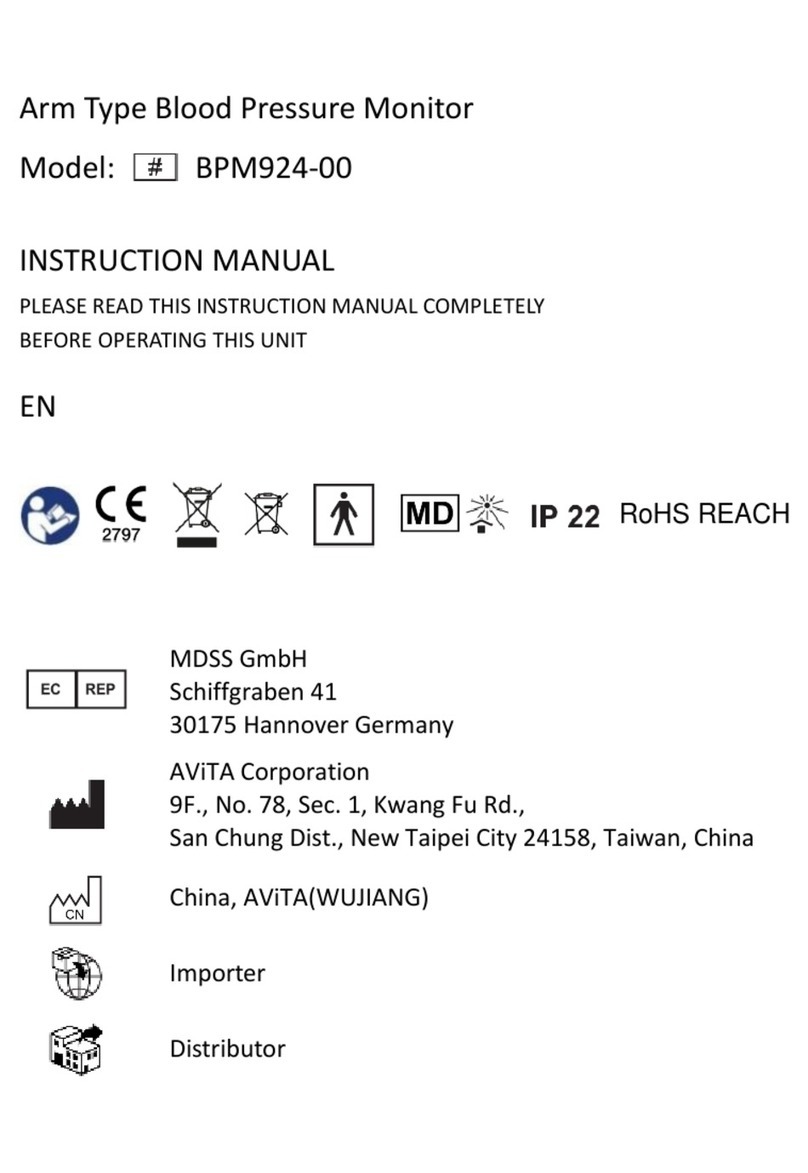
1
Intended Use
The BPM19B Series automatically measures human begins Systolic,
Diastolic blood pressure and pulse rate by oscillometric method. The
measurement results are displayed on the LCD. Measurement position
is at human being's arm. The intended use of this over-the-counter
device is for adults with arm circumference ranging from 125 mm to
210 mm (Approx. 4.9 ~ 8.3 inches) and for home use. When the device
detects the appearance of irregular heartbeats during measurement, an
indicated symbol will appear with measuring readings.
This device is designed only for adults.
Contra-indications
Do not use in this case. (e.g. common arrhythmias such as atrial or
ventricular premature beats or atrial
fibrillation, arterial sclerosis, poor perfusion, diabetes, age, pregnancy,
pre-eclampsia, renal diseases, patient motion, trembling, shivering)
